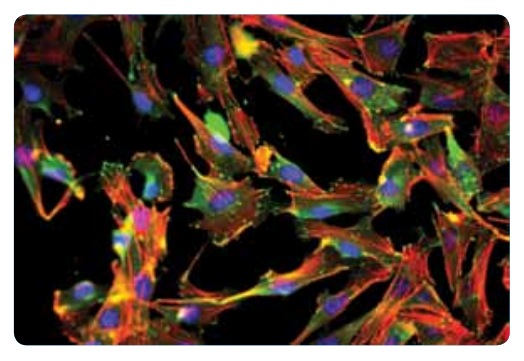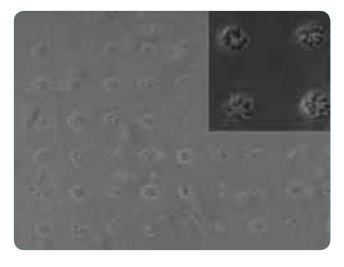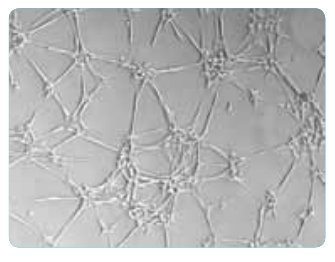Abhijit Majumder
Core Faculty
Professor

136, Chemical Engineering
Core Faculty
Professor
DBT-Wellcome Trust India Alliance Early Career Fellowship
TR-35 India Young Investigators Award
Peeble Travel Grant Award and Runners Up, Alan Gent Award


The mechanical environment of stem cell niches controls cell fate and cell behaviour. Mechanical cues may be generated by the cells themselves or can be externally applied like flow or vibration. In the past two decades, almost every aspect of cell behaviour including cell survival, migration, cell division, differentiation, and apoptosis have been found to be greatly influenced by mechanical/geometric signals. Irrespective of the nature and origin of a mechano-signal, the mechanism by which such signals impinge genetic programs are not well understood. Although a few key molecular players and pathways have been identified, and the impact of their perturbation have been studied. However, the molecular mechanisms controlling the process of mechano-sensing are still obscure. A consistent database and quantitative model that can connect mechano-signals to the corresponding morphological changes is also a need in the field. My aim is to address some key questions pertaining to mechano-signalling and mechano-sensing. I have chosen to use mesenchymal stem cells (MSC) as my model system considering their multi-lineage differentiation potential and therapeutic value. Specifically, I am interested in understanding how cellular morphology, contractility and mechano-responses are connected, and whether a universal predictor for all kind of mechano-signals and responses exists. I plan to explore the underlying molecular mechanism and to probe the possibility of mechano-transduction via physical deformation of the nucleus. Towards that goal, I propose a two-pronged approach using (a) materials and mechanics (b) cellular and molecular biology

Research in recent years has established that both chemical and mechanical signals are crucial in determining almost every aspect of cell fate: cell division, maintenance, differentiation, quiescence and disease. Often, the gradient of a signal plays a more critical role than the absolute concentration of that particular signal. This project aims to explore the combinatorial effect of chemical and mechanical gradient on cell migration and differentiation by developing a novel micro-fluidic based device. At present, availability of experimental assays to study simultaneous gradients/attractants is poor. Even to study single chemical gradient, the choice of a device is limited and each device comes with its own constraints such as additional shear stress on cells for flow-based devices or instability of the gradient for static devices. In this project, we are designing a micro-fluidic device which would be able to create a shear-free, stable and robust chemical gradient. In addition, the device would be compatible with a substrate of gradient stiffness. The chemical and mechanical gradient can be arranged in synch or at any other angle to study the effect of geometry.